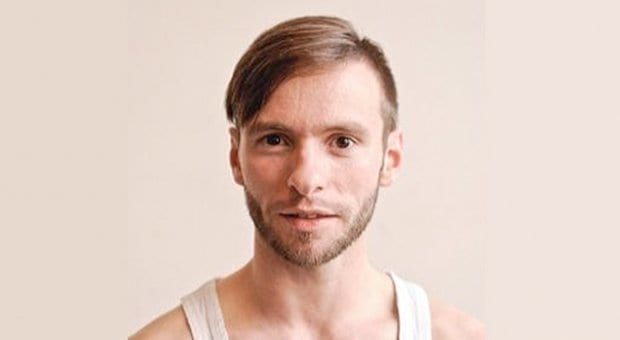
A Dance Tribute to the Art of Football was first conceived as a means of challenging what men could do onstage. Credit: Knut Bry
While North Americans know it as soccer, for the rest of the world two teams kicking a black-and-white ball around a field is known as football. It’s this version of the game that inspired A Dance Tribute to the Art of Football, performed by Norway’s Jo Strømgren dance company. Structured like a typical match, the show features elements any sports fan will recognize. Standard archetypes pop up throughout: the showoff more interested in attention than playing, the aggressor more interested in fighting than winning, the klutz who can’t do anything right.
“A lot of people can be put off when they hear ‘contemporary dance,’ thinking they won’t understand it,” says company dancer Jan Nicolai Wesnes. “But with this piece, even if you’ve never seen a dance show in your life, you’ll be able to understand it. All the familiar moments from a sports match are there. There’s also a lot of humour in it. People always laugh a lot.”
From the warm-up, through penalties, fights and disruptive hooligan fans, the piece captures the essence of the world’s most popular sport, right up to the post-game shower (and yes, they will be naked). Though nudity is often used for shock value in performance, in this case it serves a practical matter.
“Sports are often about performing certain roles, just like in dance,” Wesnes says. “But there’s one place where people stop performing after it’s over, and that’s in the shower. You stop being this character and you’re just yourself. For me it’s the most beautiful part of the show, just four naked bodies.”
Wesnes is one of a large group of dancers who’ve performed in the work over time. First presented in Norway in 1997, the piece has toured extensively since then, gracing stages across Europe, South America and East Asia. Though its accessible quality and humorous tone has made it a festival favourite, it was first conceived as a means of challenging what men could do onstage.
“Up until that point in Norway, dance was considered this very effeminate thing, something that only gay people do,” Wesnes says. “The choreo-grapher wanted to show male dancers were just as tough and as physically gifted as other athletes and try to break down the distinction between the two fields of art and sport to show what we have in common.”
It’s a struggle Wesnes is all too familiar with. Growing up gay in the small town of Raufoss, about two hours from Oslo, he arrived in the capital city in 1998 to study dance and with the hope of finding like-minded guys. He turned out to be the only male dancer enrolled at his school, but the open-minded environment did give him the courage to come out.
“My classmates were all pretty top-notch people, so it was easy to come out to them and then shortly after to my family,” he says. “Finding something I was good at was a big part of that process. Dance gave me the confidence to be proud of who I am.”


 Why you can trust Xtra
Why you can trust Xtra


